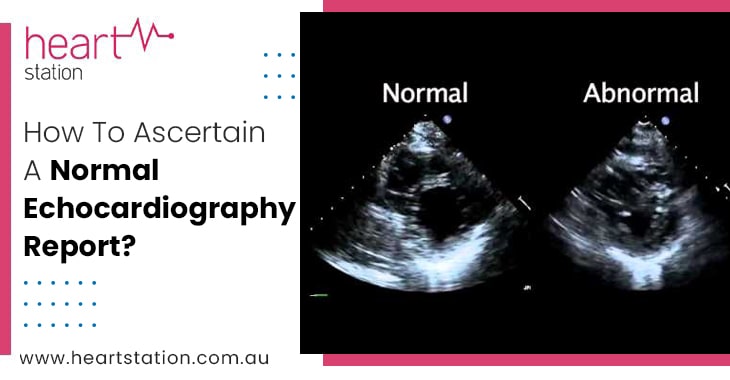Heart disease is one of the leading causes of death worldwide, regular health check-ups, including Echocardiography, play a pivotal role in early detection and prevention. At Heart Station Clinic, the Top Echocardiography Testing Centre in Pimlico, we are committed to promoting heart health and ensuring our patients have access to the most accurate and reliable cardiac diagnostic services. This blog aims to shed light on understanding and ascertaining a normal Echocardiography report to empower you to take control of your heart health.
- Understanding Echocardiography
- Key Components of an Echocardiography Report
- Interpreting a Normal Echocardiography Report
Understanding Echocardiography:
Echocardiography, often called an “echo,” is a non-invasive ultrasound test that allows doctors to visualize the heart’s structure and function in real-time. It provides essential information about the heart’s valves, chambers, and blood flow. By analyzing the data obtained through this test, healthcare professionals can diagnose various heart conditions, from congenital defects to acquired diseases.
Key Components of an Echocardiography Report:
To ascertain a normal Echocardiography report, it’s crucial to understand the key components that doctors typically evaluate during this test:
Chamber Size and Wall Thickness:
The heart’s chambers’ dimensions and the heart walls’ thickness are evaluated. Enlarged chambers or abnormal wall thickness can indicate heart conditions.
Valve Function:
Echocardiography assesses the function of heart valves, including the aortic, mitral, tricuspid, and pulmonary valves. Proper valve function ensures unidirectional blood flow.
Ejection Fraction (EF):
EF measures the heart’s pumping ability and is a critical parameter. A normal EF typically falls between 50% and 70%.
Blood Flow:
The test examines blood flow patterns within the heart, looking for any obstructions or regurgitation.
Cardiac Output:
This parameter quantifies how much blood the heart pumps per minute, helping doctors assess heart performance.
Pericardium:
Echocardiography also evaluates the pericardium, the membrane around the heart. Anomalies in the pericardium can lead to conditions like pericarditis.
Interpreting a Normal Echocardiography Report:
Now that we’ve outlined the essential components of an Echocardiography report, let’s dive into how to ascertain that your report is normal:
Chamber Dimensions:
In a normal report, the heart’s chambers should be of typical size and proportion. Anomalies in chamber dimensions could indicate heart conditions, such as hypertrophic cardiomyopathy.
Valve Function:
A normal report will show that all heart valves function correctly. There should be no evidence of stenosis (narrowing) or regurgitation (leaking) in the valves.
Ejection Fraction:
A normal Echocardiography report will indicate a healthy ejection fraction, typically between 50% and 70%. A value outside this range may suggest a problem with the heart’s pumping ability.
Blood Flow:
Blood flow should be smooth and unobstructed in a normal report. Turbulent flow or the presence of clots can indicate underlying heart issues.
Cardiac Output:
A normal report will show an appropriate cardiac output, ensuring the heart pumps enough blood to meet the body’s demands.
Pericardium:
The pericardium should appear normal with no signs of inflammation or abnormalities.
Final Words
A normal Echocardiography report is a reassuring sign of good heart health. However, it’s essential to remember that an Echocardiography report is just one piece of the puzzle. Regular check-ups, a healthy lifestyle, and timely consultations with specialists are vital to maintaining a healthy heart. We are committed to providing the best cardiac care to the community at Heart Station Clinic, the Top Echocardiography Testing Center in Pimlico. We encourage everyone to prioritize their heart health and use our Echocardiography services to ensure a healthy and fulfilling life. Remember, your heart is in good hands with us!

